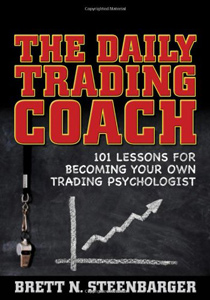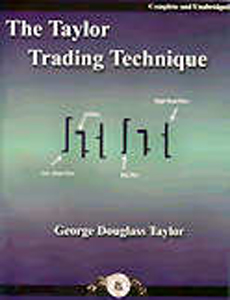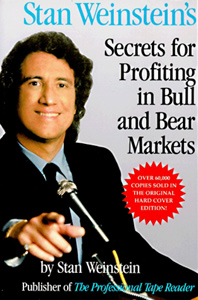One Cancels Other (OCO)
Further Reading
One Cancels Other (also known as OCO) is a kind of trading order that is formed by some conditional parts where execution of one part of the order automatically leads to the cancellation of the other part.
In case of the One Cancels the Other (OCO) order, the execution of one order results to the cancellation of another order. It means, an investor places two orders simultaneously and runs with the order that is triggered first.
One Cancel Other or OCO is usually used to manage the risks involved with the investment. A trader may use this type of order to sell a stock in times when the value of that stock drops considerably high or low. A trader may set the OCO order by considering two type of trade: first, selling the stock at the high price threshold and second, selling at the low one. If one of these trades occurs, the other one will be cancelled automatically.
To have a clear understanding of OCO, let’s consider a trading scenario. Let’s assume that a trader is willing to choose one from two available options. The first option is going long (to purchase) the CFDs of ABC Company if the price breaks above $24.50. And the second option is to sell first and then buy back if the price slides down to $24.00 (going short). If the $24.50 gets triggered, the investor will go for the long trade and will cancel the short trade. However, if it is the $24.00 that gets triggered then the opposite thing will happen. Means, the trader will go for the short trade and will cancel the long trade.
A trader may consider using this kind of order in a market or for a CFD that is trading within a certain range where opportunity exists to get the best out of the volatility, something that is possible if the break outside the range allows the trader to do so.
Implementing Limit and Stop Order for OCO
It is to be mentioned that an investor can utilise the OCO order for making profit by implementing a limit and a stop order. Say for example, a trader is dealing with the CFDs of company XYZ. Now the trader is long 2000 XYZ at $19.80 but is willing to cut the position if the price goes down to $19.00. This is why the first part of the order is a “stop sell” at $19.00. On the other hand, if the market is moving upwards, then the trader will exit with profit when the price hits $20.25. This part of the trading comes with a “limit sell” at $20.25. According to OCO, one of these orders will be cancelled automatically when the other one is executed.
Glossary List- How to Trade Forex and Gold Options
- How to Trade the Gold Price and Profit!
- Forex Trading the EUR/USD Pair € EURO and $ US Dollar
- How to Trade Stock Market Indices S&P500
- How to Trade Crude Oil
- Forex Trading Psychology
- What Are Broker Recommendations?
- Free Tickets to Trading & Investing Seminar & Expo ($18) Brisbane 2013
- Stock Calc App
- All About Warrants
- Introduction to Exchange Traded Funds
- Introduction to Exchange Traded Funds: Features
- Introduction to Exchange Traded Funds: Domestic ETFs
- Introduction to Exchange Traded Funds: International ETFs
- Exchange Traded Commodities
- Australian Stock Scan
- Australian Online Share Trading
- List of Trading Books
- Interesting Thoughts about the Australian Dollar
- What's the Meaning of Hawkish?
- Do You Know How To Use the P/E Ratio
- Trading, Religion and Politics - Do They Have Anything in Common?
- Shares that are Volatile that Double and Half in the Short Term
- Telstra (TLS) T3
- Margin Call by E-mail
- The Cost of Holding a Position
- Lack of Disclosure: Compensation from ASX Listed Company
- Unrealistic Returns and Benchmarks
- CMC Markets Down
- Quality versus Quantity Forex Trading
- Woolworths 1H Sales $30.7bn up 3.2%
Date added 31-01-2013 - ASIC Fines CommBank's CommSec
Date added 25-09-2012 - Industry Super Network Calls to Ban High Frequency Trading (HFT)
Date added 22-09-2012 - NAB Launches Online Share Trading Platform
Date added 19-09-2012 - Reserve Bank of Australia Says 23 Countries Holding AUD
Date added 18-09-2012 - Australia Post Digital Mailbox
Date added 10-09-2012 - Winners and Losers of Trading for Week 2
Date added 16-01-2012 - 2012's First Week of the Best and Worst Traded Stocks
Date added 09-01-2012 - 2011's Last Best and Worst Traded Stocks
Date added 05-01-2012 - Best and Worst Pre-Christmas Traded Stocks
Date added 30-12-2011 - Trading Winners and Losers for Dec. 12-16
Date added 19-12-2011 - Best and Worst Traded Stocks for Dec. 5-9
Date added 13-12-2011 - Top 3 Best and Worst Traded Stocks
Date added 05-12-2011 - ASX Glitch Trading Halt
Date added 27-10-2011 - Worst Trade Stocks (and the Best)
Date added 06-08-2011
Top 150 Public Companies Listed on the Australian Stockmarket as at 29/05/2009
- BHP Billiton
- Westpac Banking Corporation (WBC)
- Commonwealth Bank of Australia (CBA)
- National Australia Bank (NAB)
- Telstra (TLS)
- ANZ
- News Corporation (NWS)
- Woolworths Limited(WOW)
- Woodside Petroleum Limited (WPL)
- Rio Tinto
- Westfield Group (WDC)
- Westfarmers Limited (WES)
- QBE Insurance
- CSL
- Newcrest Mining Limited (NCM)
- Origin Energy Limited (ORG)
- Santos Limited (STO)
- AMP Limited (AMP)
- Macquarie Group (MQG)
- Foster’s Group Limited (FGL)




